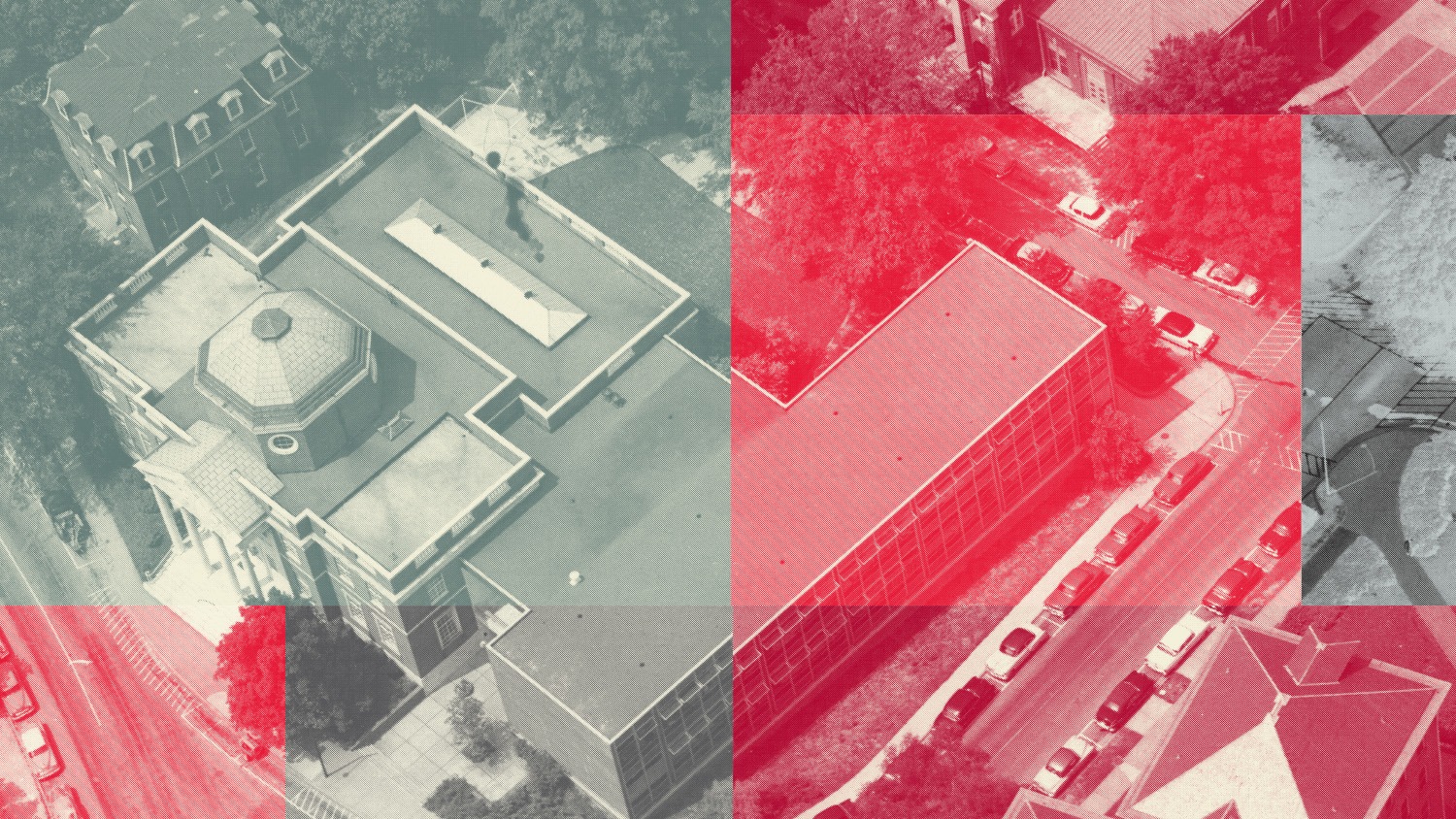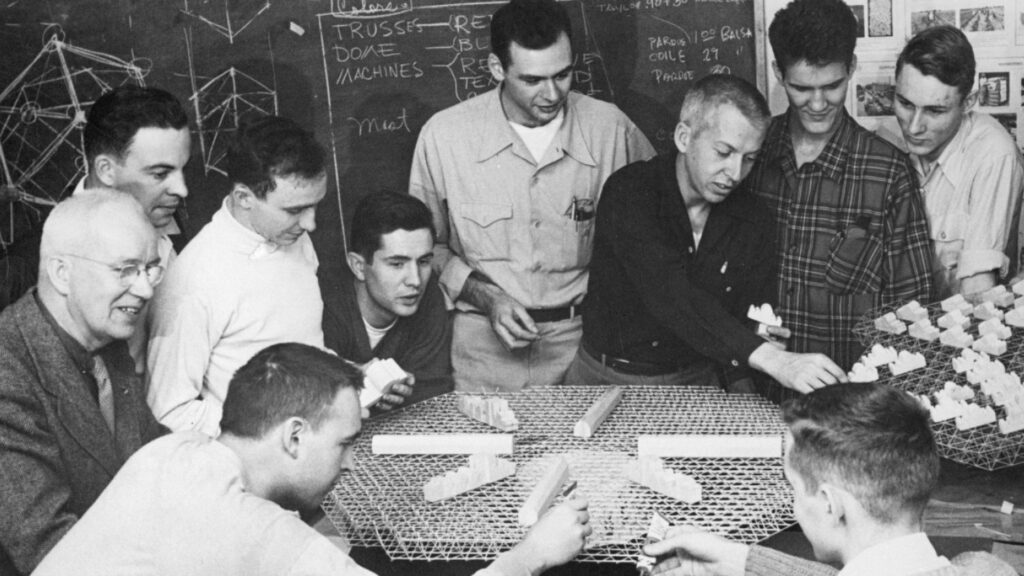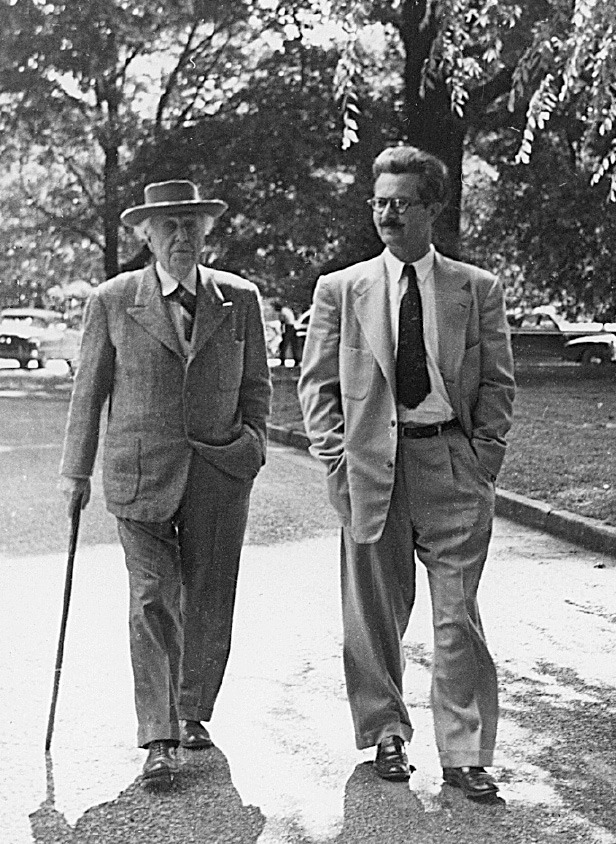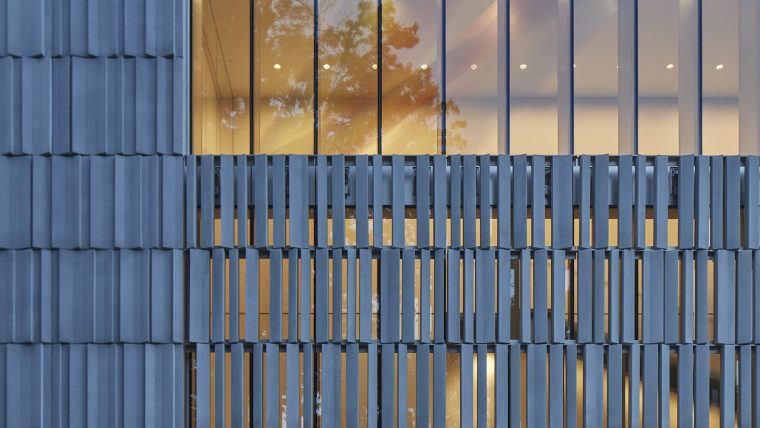2023 marks the 75th anniversary of the founding of NC State University’s School of Design, now known as the College of Design. To commemorate its modernist legacy, the university’s magazine asked that I write a brief history of its founding for the current issue. A+A is pleased to post that feature in two parts, today and tomorrow:
In the fall of 1960, Henry Kamphoefner, dean of the NC State School of Design, pulled up to Raleigh’s downtown bus station to pick up Brian Shawcroft, a recent MIT grad, for a faculty interview. He was driving a bright red 1953 Studebaker, stripped of its bumpers and chrome. The iconic car already was hailed as the epitome of modern design. But Kamphoefner had kicked it up a notch by removing its ornament. Modernism, after all, eschews decoration.
This year, as the College of Design celebrates its 75th anniversary, the legacy of Kamphoefner and his embrace of Modernism in those early years lives on. NC State faculty and graduates have left a lasting impact on the built environment in the Triangle and beyond, represented by such structures as Dorton Arena at the N.C. State Fairgrounds, the Denver International Airport and the Smithsonian’s Museum of African American History and Culture in Washington, D.C.
The mantra of Modernism is that “form follows function.” In architecture, that means clean lines, flat roofs, deep overhangs, open floor plans and glass curtain walls — and abolishing the froufrou and ornate decoration found in Victorian, Colonial and Georgian Revival styles.
In the Triangle alone there are at least 800 Modernist homes, according to George Smart, CEO of US Modernist, most designed by NC State architects. That’s in part because Kamphoefner hired internationally known architects to be part of the founding faculty, and he insisted that his professors build as well as teach. This was a school where the practice of architecture mattered. Besides, how better to preach the doctrine of Modernism than to build it?
Kamphoefner was offered the position of dean — and a salary of $9,000 — by Chancellor J.W. Harrelson in 1947. At the time he was acting head of the School of Architecture at the University of Oklahoma. When he arrived in Raleigh to meet Harrelson, he was armed with four non-negotiable conditions: The current department head had to return to teaching, replaced by “a man of national reputation.” One tenured professor must resign. Five non-tenured instructors were to be terminated and replaced by six others. And there had to be a space on campus dedicated to the new school.
The chancellor agreed to all. Classes at the new School of Design commenced in the fall of 1948. Kamphoefner brought with him four widely known Modernists and set about to making Raleigh a center of the movement. He enlisted Lewis Mumford, architecture critic at The New Yorker, to come and help shape the curriculum. Buckminster Fuller, who developed the geodesic dome, was a visiting lecturer who worked hands-on with students. And Frank Lloyd Wright came to deliver a lecture at Reynolds Coliseum in 1950, attracting a crowd of 5,000.
“He was brilliant,” says Raleigh author, professor and architect Frank Harmon, noting that Kamphoefner brought well-known practitioners “to this little red-dirt town of 50,000 people.” At that time, he says, Raleigh “was the center of the architecture world.”
Tomorrow: Dorton Arena, the Catalano House, the Matsumoto Residence and the Paschal House.
For more, go here.





